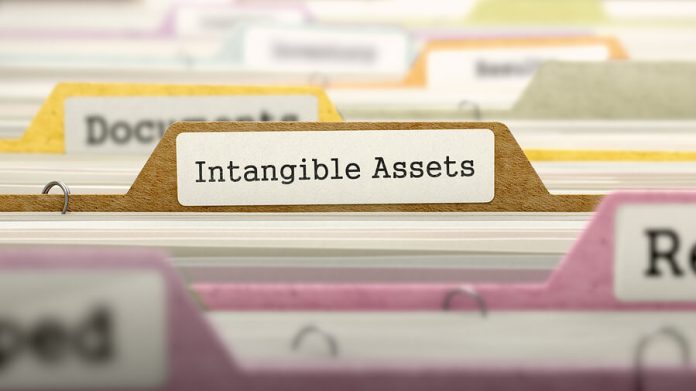This article is written by Saswata Tewari from the University of Petroleum and Energy Studies, Dehradun. This article discusses the valuation of intangible assets as per the necessary rules and regulations of Indian law.
Table of Contents
Introduction
Intangibles are distinct assets that have monetary value in them but are not physical and which are utilized in the manufacture and supply of goods and services, for renting to others, or for administrative purposes. For example, intellectual property like patents, trademarks, and copyrights are all types of intangibles.
All businesses can create their intangibles or can acquire intangibles from other businesses. For instance, if a business establishes their patent, they have to create their intangible asset. Now if they have established their patent they can also write off the expenses regarding the patent process which includes the filling of the patent application, hiring a lawyer, and paying other such costs. Furthermore, all costs incurred in the creation of the intangible asset are expensed. Intangible assets, on the other hand, do not appear on a company’s balance sheet and have no recorded book value. As a result, when a business is bought, the acquisition price is often higher than the book value of the assets on the balance sheet. The premium charged is reported as an intangible asset on the balance sheet of the buying business.
This fact raises the importance of valuing the intangible assets in a company as it is possible for a company to not show the correct net worth of its businesses, which is most certainly in the form of intangible assets of the company. The valuation of intangible assets is also important for the followings:
- Purchase price allocation for accounting and financial reporting
- Impairment testing
- Transfer pricing
- Taxation for transactions such as mergers and acquisition
- Financing
- Litigation
- Bankruptcy
- Restructuring
However, one should know that the valuation of intangible assets can differ from type to type. The method used for the valuation of a particular type of intangible assets cannot be suited for a different type of intangible. For the benefit of the readers, the author has further mentioned the types of intangible assets listed below:
- Marketing related: trademarks, service marks, non-compete agreements.
- Customer-related: customer contracts, customer lists, non-contractual customer relationships.
- Artistic related: musical works, literary works, motion pictures.
- Technology-based: patents, copyrights, trade secrets.
- Contract-based: lease agreements, franchise agreements, service or supply contracts.
- Legal protection: patent, copyright, trademark, government concession.
- Events: brand name susceptible to bad publicity, product recall, cultural factors, genetics.
- Obsolescence: technological, functional, not in fashion.
- The interplay between intangibles: corporate identity without promoter/management.
Methods of intangible valuation
Now coming to our main part of the topic, valuation of intangible assets takes place usually by following the three important valuation approaches that are recommended under the Indian Valuation Standard 103 Valuation Approaches and Methods. These methods are :
- Market Approach
- Income Approach
- Cost Approach
Market Approach
The market approach method relies on the prices and other relevant data from the market transactions which involves identical or comparable assets, liabilities, or a group of assets and liabilities such as a company. Using the technique of market approach to get the value of an intangible asset requires a certain market transaction or an activity.
The market approach shall be used only if sufficient information about the comparable intangible asset from a recent transaction is available and there are examples of orderly transactions that can be compared with the intangible asset to be valued, as stated in paragraphs 16-17 of Indian Valuation Standard 103. A compared intangible asset has the same nature, age, function and is at the same stage of its life cycle as another intangible asset. The valuation of the intangible asset will rely on a transaction concerning the comparable intangible asset that can be utilized to get pricing multiples or capitalization rate. The rate obtained can be used to calculate the intangible asset’s value.
The following are some of the most popular methodologies for the market approach:
-
Price/valuation multiples/capitalization rates
This method is based on specific multiples/capitalization rates which are considered to get the valuation of a comparable intangible asset. Any discrepancies arising between the intangible asset to be valued and equivalent intangible assets are to be factored into the multiples.
-
Guideline pricing
The guideline pricing method is used to establish the value of an intangible asset by considering the price charged in an orderly exchange for a comparable intangible asset. Even so, it should be noted that it can be difficult to get accurate data in the form of a public transaction, a valuation multiple, or a guideline intangible asset.
Income Approach
The valuation method of income approach is based on the reduction of future amounts, that is the cash flows or income and expenses, to a single current (discounted) amount. The fair value calculation is based on the value implied by existing market expectations for future amounts.
The income approach method is based on the assumption of economic profits from the intangible asset to be valued. It is to say that the value of an intangible asset is the present value of the estimated profits or costs saved by the intangible asset’s owner, either by owned operations or licencing. The revenue is then adjusted to account for any costs related to the intangible asset’s preservation or enhancement. A risk-adjusted discount rate is used to discount the future net cash flows to present value.
The income approach method is widely used to value intangible assets such as customer relationships and contracts, technology, non-competition agreements, leasehold rights, trademarks, brands, etc. The income approach must be used in compliance with the criteria of paragraphs 50-54, Indian Valuation Standard 103 Valuation Approaches and Methods. Some of the commonly used methods of the income approach are listed below:
-
Relief from royalty method
In the relief from royalty method, the value of an intangible asset is measured by calculating the total costs saved that would have otherwise been charged by the customer as royalty payments if the asset had been leased from another party. It may also represent the value of an intangible asset that, if leased to a third party, could have generated cash flows in the form of royalty payments. Any associated expenses that the licensee is likely to incur must be deducted from the forecasted revenues.
-
Multi-period excess earnings method
Also known as the MEEM, this approach is used to value an intangible asset that is the business’s main intangible asset. For instance, when valuing two intangible assets, such as consumer contracts and intellectual property rights, MEEM should be used for one of the intangible assets, while another approach should be used for the other intangible asset.
According to this process, the present value of the surplus cash flows attributable to the intangible asset to be valued (based on consumer turnover rate), when adjusted for the corresponding expenditures needed for the production of the cash flows and cash flows on contributory assets(assets that add to the intangible asset’s cash flows to be valued).
-
With and without method
The with and without method (WWM) is used to calculate the value of intangible assets by comparing the following situations in which the business:
- Uses the intangible asset to be valued, that is the ‘with scenario’
- Do not use the intangible asset to be valued, that is the ‘without scenario’.
It should be kept in mind that all other aspects of valuation should remain constant.
-
Greenfield method
The greenfield method’s basic premise is that the intangible asset to be valued is the only asset, with all other tangible and intangible assets being generated, rented, or acquired. Instead of deducting the contributory asset fee from the cash flows, a valuer is expected to deduct the replacement cost of the asset that must be installed or purchased. The greenfield method is usually used to value franchise agreements.
-
Distributor method
This is very much similar to the process of MEEM and this process is used to value customer-based intangible assets (considered to be more significant). The basic premise of the distributor approach is that the cash flows of each division of a company are intended to produce income.
Cost Approach
The valuation method of the cost approach shows the amount that would be needed currently to replace an asset’s service capability. This is also known as the current replacement cost.
Under this process, the valuation of an intangible asset is focused on the principle rule of substitution, which states the amount that shall be needed to produce a new equivalent intangible asset after the depreciation becomes the value of the intangible asset to be valued. This approach may not be appropriate when the intangible asset to be valued is not replaceable and original, such as patents, which are unique intellectual property and cannot be perfectly recreated. Similarly, the cost approach method may be used for such intangible assets, but only to a restricted extent.
The cost approach method is usually used to value intangibles such as the software, technology, and assembled employees that are purchased or internally produced. Also, the cost approach is used where the valuation methods under the market and income approach do not apply. Some of the widely used cost approach methods are listed below:
-
Reproduction cost method
The method of reproduction cost entails valuing an asset based on the cost incurred by the market player to reproduce a copy of the asset to be measured or modified for obsolescence.
According to this process, the overall cost to create an exact copy of the intangible asset to be priced is the value of an intangible asset using this process. Nonetheless, since intangible assets are seldom created (except for software), any intangible asset that could theoretically be developed with the same purpose and utility will serve as a value base for the intangible asset to be valued.
Datasets such as direct costs, indirect costs, developer benefit for the intangible asset, and so on may be included in the costs to replace. Any physical, functional, or economic obsolescence will be factored into the cost calculated using this process.
Conclusion
Businesses are no longer ignoring intangible assets. Businessmen have recognised the value of intangible assets and understand how these assets with no physical presence can aid them in establishing their company later on. Businesses need to know the real value of these intangible assets to know where they stand and also how to use these intangibles for leverage during a merger or an amalgamation. For correctly valuing these intangible assets, rules and regulations have been developed, and companies should calculate the value of intangibles using the government’s prescribed rules and standards.
References
- https://www.icai.org/new_post.html?post_id=15070
- https://icairvo.in/documents/Educational%20Material%20-%20ICAI%20Valuation%20Standard%20103-%20Valuation%20Approaches%20and%20Methods.pdf
LawSikho has created a telegram group for exchanging legal knowledge, referrals and various opportunities. You can click on this link and join:
 Serato DJ Crack 2025Serato DJ PRO Crack
Serato DJ Crack 2025Serato DJ PRO Crack











 Allow notifications
Allow notifications



